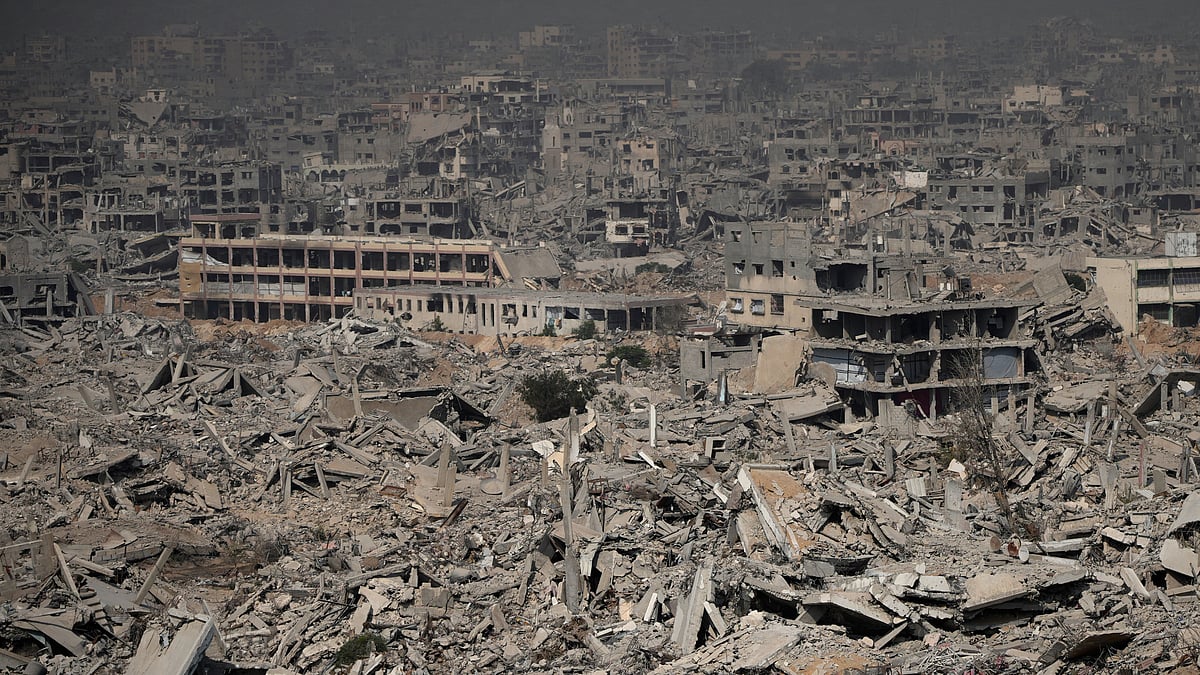World
Gaza’s grief deepens as death toll climbs beyond 69,000 despite fragile ceasefire
UN reports 126 settler attacks since September across 70 Palestinian towns, with over 4,000 olive trees destroyed — wiping out livelihoods and heritage

Nearly a month after guns were meant to fall silent, Gaza remains haunted by the echoes of war. The ceasefire between Hamas and Israel, brokered with hope and hesitation, has failed to still the storm. Amid the dust and debris of a land gasping for breath, the death toll continues its grim ascent — a testament to wounds that refuse to heal.
The ministry of health in Gaza announced on Saturday that the number of Palestinians killed since 7 October 2023, has risen to 69,169, as more bodies are pulled from the ruins and long-missing names are finally written into the record of loss, the Al Jazeera reported.
Even after the truce, Israeli attacks have claimed more than 240 additional lives, the ministry said. On Saturday, reports of fresh killings poured in once again.
The Israeli military confirmed that its troops had shot dead a Palestinian who crossed the so-called “yellow line” in northern Gaza — the boundary Israel had agreed to withdraw to under the US-brokered truce. Another man was killed in the south, allegedly for posing “an immediate threat” to Israeli forces. For the families who live on the margins of these invisible borders, even approaching their own land now carries the risk of death.
Published: undefined
In Khan Younis, tragedy took another form when a child was killed after an unexploded device left behind by Israeli forces detonated, Nasser Hospital reported — a silent remnant of war claiming yet another young life.
Meanwhile, the World Health Organisation (WHO) urged the reopening of the Rafah crossing between Gaza and Egypt, calling it a lifeline for the wounded and the sick. About 4,000 patients have been evacuated through Rafah for treatment abroad, but 16,500 others remain stranded — their survival hanging on the politics of borders.
“The Rafah crossing is a vital exit for medical evacuations and a key entry for health supplies,” the WHO said, noting that Egypt remains one of the main destinations for patients in need of urgent care.
Across the occupied West Bank, another kind of violence has persisted — slow, deliberate, and relentless. Israeli settlers, emboldened and often protected by soldiers, have continued their campaign of intimidation and displacement. On Saturday, settlers attacked a group of Palestinian villagers, activists, and journalists harvesting olives in Beita, south of Nablus — one of many such assaults during this year’s harvest season.
Witnesses described the chaos: masked settlers descending from the hills, hurling huge rocks and wielding clubs. Israeli activist Jonathan Pollak, who was helping Palestinians with their harvest, said more than a dozen people were injured — among them a 70-year-old man whose cheekbone and jaw were broken, and a journalist beaten nearly unconscious.
The Palestinian Journalists Syndicate condemned the attack as a “war crime aimed at killing them”. Reuters confirmed that two of its own staff — a journalist and her security adviser — were among the injured.
The violence is part of a pattern. The United Nations says at least 126 settler attacks have been recorded since September across 70 Palestinian towns and villages, leaving more than 4,000 olive trees vandalised or uprooted — erasing not just livelihoods, but symbols of endurance and identity.
Elsewhere in the West Bank, settlers launched fresh assaults on the village of Raba, southeast of Jenin, accompanied by Israeli troops. The army intensified its own raids, injuring one man in the Far’a refugee camp, arresting a 13-year-old boy in Yabad after beating him in the street, and shooting another man near the separation wall north of East Jerusalem.
As night fell on the village of Salem, east of Nablus, Israeli forces fired tear gas at worshippers gathered for evening prayers at the Izz al-Din al-Qassam Mosque. Dozens choked and collapsed, their cries rising into the smoke-filled air — a haunting echo in a land where even prayer offers no refuge.
Published: undefined
Follow us on: Facebook, Twitter, Google News, Instagram
Join our official telegram channel (@nationalherald) and stay updated with the latest headlines
Published: undefined